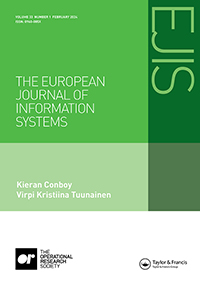Publication of a study on how unintended use can inform information system design

Professorship Digital Transformation - "Digital Desire Paths: Exploring the Role of Computer Workarounds in Emergent Information Systems Design", Open Access in the European Journal of Information Systems
Link to article
The study deals with the question of how user behavior can be used for the development of IT systems and develops the concept of digital desire paths. In particular, the authors examine how computer-aided workarounds, generally regarded as negative disruptions, can be used to improve information systems. When designing information systems, it is essential to include user behavior in the development so that the systems are accepted by users. In this study, the authors examine six workarounds in two case organizations and analyze the connections between them. They develop the concept of "digital desire paths" to describe the process of how developers improve system design by observing how users use and interact with the system. "Digital desire paths" offer a novel interpretation of workarounds and unintended use as input for information system design and thus serve as an example of the principle of guided emergence in action design research. The results are transferable to complements in digital platform ecosystems, in which emergence is often data-driven and designed with high procedural requirements for mobile apps, but also for ecosystems around generative artificial intelligence in the design of GPTs.






